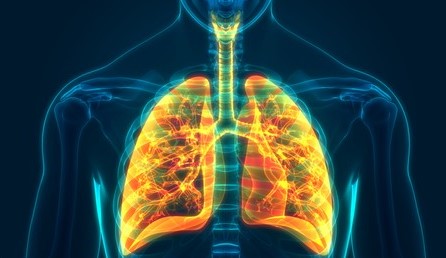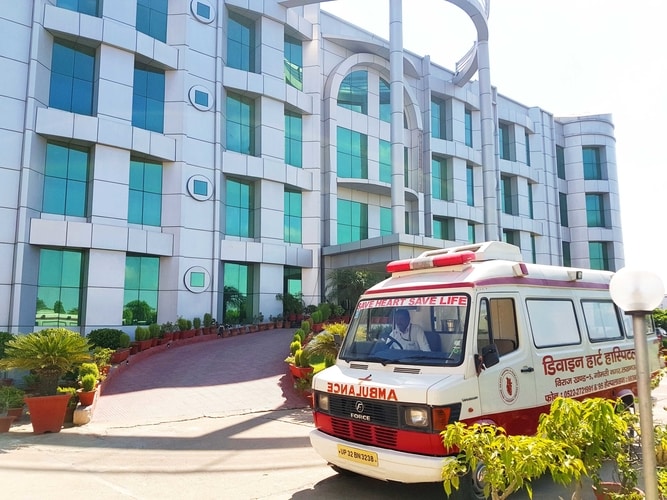
COPD: Causes Symptoms and Treatment
COPD is a chronic inflammatory lung disease that obstructs the flow of air in the lungs.
This is usually caused by prolonged exposure to irritating gases or particulates and in most cases cigarette smoke.
People with Chronic Obstructive Pulmonary Disease are at an increased risk of developing a variety of conditions, including heart disease and lung cancer.
COPD is a common preventable and treatable chronic lung disease that affects men and women worldwide. Abnormalities in the small airways of the lungs result in airflow restriction into and out of the lungs.
Part of the lungs is being destroyed and mucus is blocking the airways, possibly causing the lining of the airways to become inflamed and swollen.
The two most common conditions that contribute to COPD are Emphysema and Chronic Bronchitis which generally occur together and may be of different severity to different COPD patients.
Chronic Bronchitis is an inflammation of the bronchial endometrium that carries air to the air sacs (alveoli) of the lungs. It is characterized by coughing and mucus (sputum) coming out every day.
Emphysema is a condition in which particulate matter is damaged by exposure to tobacco smoke and other irritating gases, destroying the alveoli at the ends of the bronchi of the lungs.
COPD is a progressive disease that worsens over time, but COPD can be cured. Through proper management, most COPD patients can achieve good control of their symptoms, a better quality of life, and also reduce the risk of other related illnesses.
Key Facts of COPD
- COPD killed 3.23 million people in 2019 as the third leading cause of death worldwide [1].
- Over 80% of these deaths occurred in low-income and middle-income countries (LMICs).
- COPD induces persistent and progressive adult respiratory symptoms, including dyspnea, cough, and/or sputum production.
- COPD occurs after long-term exposure to harmful gases, particles, and individual factors like impaired lung development and childhood inheritance).
- Tobacco smoke, indoor air pollution, occupational, dust, smoke, and chemical exposure to the environment are important risk factors for COPD.
- Early diagnosis and treatment, including support to quit smoking, are necessary to slow the progression of symptoms and reduce recurrence.
Symptoms of COPD
COPD symptoms often appear after severe lung damage has occurred and usually get worse over time, especially if exposure to smoking continues.
Signs and symptoms of COPD include:
- Shortness of breath,
- Wheezing
- Chest tightness
- A chronic cough that may cause clear, white, yellow, or green mucus (sputum)
- Frequent respiratory infections
- Lack of Energy
- Unintentional weight loss (in later stages)
- Swelling in ankles, feet, and legs
- COPD people may experience episodes called exacerbations, during which their symptoms last for at least a few days, worse than the usual routine changes.
Who is at risk for COPD?
The risk factors for COPD include:
Smoking- This is often the most common risk factor. Up to 75% of individuals who have COPD smoke or are accustomed to smoke.
Long-term exposure to different respiratory organ irritants, like smoke, pollution, and chemical fumes, and dust from the surroundings.
Age- Most of the people who have COPD are at least 40years old once their symptoms begin.
Genetics- This includes alpha-1 antitrypsin deficiency, which could be a genetic condition. Also, smokers are more vulnerable if they have a family history of COPD.
Asthma- Compared to people without asthma, people with asthma have a higher risk of COPD. However, most people with asthma do not develop chronic obstructive pulmonary disease.
Treatment for COPD
COPD is often misdiagnosed. Many people with COPD may not be diagnosed until the disease progresses. Consult our Chest Specialists in Lucknow if you think you are facing similar conditions, or have suffered from them in the past.
To diagnose your condition, consult your doctor for your signs and symptoms, your family history, and your medical history. Discuss any lung irritants you have been exposed to, especially cigarette smoke.
Your doctor may order various tests to diagnose your condition.
Tests may include:
- Lung (Pulmonary) Function Tests
- Chest X-ray
- CT Scan
- Arterial Blood Gas Analysis
- Laboratory Tests
Many patients with COPD are mildly ill and require little or no treatment except to quit smoking. Even for more advanced diseases, effective therapies can be used to control symptoms, slow progression, reduce the risk of complications and deterioration, and improve your ability to lead an active life.
Quit Smoking
The most important step in any COPD treatment plan is to quit smoking altogether. Quitting smoking can prevent COPD from getting worse and increase your breathing capacity. But quitting smoking is not easy especially if you have tried to quit smoking but were unsuccessful.
Discuss with your doctor about nicotine replacement products and medications that may be helpful, and how to control recurrence. Also, avoid exposure to secondhand smoke as much as possible.
Medications
Several types of drugs are used to treat the symptoms and complications of COPD. You can take some medicines regularly, or you can take other medicines as needed.
Bronchodilators
Bronchodilators are drugs commonly used as inhalers, they relax the muscles around the airways. This can help relieve coughs and shortness of breath, and make breathing easier.
Depending on the severity of your disease, you may need to take short-acting bronchodilators, daily long-acting bronchodilators, or both before the activity
Short-acting Bronchodilators include:
- Albuterol (ProAir HFA, Ventolin HFA, others)
- Ipratropium (Atrovent HFA)
- Levalbuterol (Xopenex)
Long-acting Bronchodilators include:
- Aclidinium (Tudorza Pressair)
- Arformoterol (Brovana)
- Formoterol (Perforomist)
- Indacaterol (Arcapta Neoinhaler)
- Tiotropium (Spiriva)
- Salmeterol (Serevent)
- Umeclidinium (Incruse Ellipta)
Inhaled Steroids
Inhaled corticosteroid drugs can reduce airway inflammation and help prevent sudden attacks. Side effects may include bruising, oral infections. These drugs are helpful for people whose COPD gets worse frequently.
Inhaled steroids include:
- Fluticasone (Flovent HFA)
- Budesonide (Pulmicort Flexhaler)
Combination Inhalers
Some medications combine bronchodilators and inhaled steroids.
These combination inhalers include:
- Fluticasone and vilanterol (Breo Ellipta)
- Fluticasone, umeclidinium, and vilanterol (Trelegy Ellipta)
- Formoterol and budesonide (Symbicort)
- Salmeterol and fluticasone (Advair HFA, AirDuo Digihaler)
Combination inhalers that include more than one bronchodilator are also available. These combinations include:
- Aclidinium and formoterol (Duaklir Pressair)
- Albuterol and ipratropium (Combivent Respimat)
- Formoterol and glycopyrrolate (Bevespi Aerosphere)
- Glycopyrrolate and indacaterol (Utibron)
- Olodaterol and tiotropium (Stiolto Respimat)
- Umeclidinium and vilanterol (Anoro Ellipta)
Oral Steroids
For people who experience a period when COPD becomes more severe (called moderate or severe exacerbations), short-term oral corticosteroids (for example, 5 days) can prevent COPD from getting worse. However, long-term use of these drugs can cause serious side effects, such as weight gain, diabetes, osteoporosis, cataracts, and an increased risk of infection.
Lung Therapies
Doctors often use these additional kinds of therapies for patients with moderate or severe COPD.
- Oxygen Therapy
- Pulmonary Rehabilitation
Oxygen Therapy
If you have severe COPD and low blood oxygen levels, you may need to supplement oxygen. There are a variety of devices that helps deliver oxygen to your lungs, including lightweight portable devices.
These devices can help you to get going with your work and walk around the town.
Some people with COPD use oxygen only when they are active or while asleep. Many use it all the time.
Oxygen therapy improves the quality of life and is the only therapy that has been proven to extend life. Talk to your doctor about your needs and options.
Oxygen therapy can help you breathe better. You may need additional oxygen all the time or only at certain times.
Pulmonary Rehabilitation
These programs usually combine nutrition education, fitness training, and counseling. You will work with various experts who can customize your rehabilitation plan to meet your needs.
Pulmonary rehabilitation after a COPD episode worsens can reduce the readmission rate, increase your ability to participate in daily activities, and improve your quality of life.
Discuss the referral plan with your doctor.
Surgery
Often used as a last resort for people with severe symptoms of Emphysema that are not improved by medication.
Surgical options include:
- Lung volume reduction surgery
- Lung transplant
- Bullectomy
Lung volume reduction surgery will remove small pieces of damaged lung tissue from the upper part of the lung. This creates additional space in the chest cavity so that the remaining healthy lung tissue can expand and the diaphragm
Lung transplants can be an option for some people who meet certain criteria. The transplant can improve their breathing and mobility. However, this is a major operation with high risks, such as organ rejection, and you must take immunosuppressive drugs for life.
Bullectomy is done when the air sac wall is destroyed, large air spaces (bullae) are formed in the lungs. These air spaces can become very large and cause breathing problems. During bullectomy, the doctor removes bullae from the lungs to help improve airflow.
Preparing for your appointment
If your General Physician suspects that you have COPD, you may be referred to a Pulmonologist, a doctor who specializes in lung diseases.
What can you do?
Before you see a doctor, you may need to list the answers to the following questions:
- What symptoms are you experiencing? When do they start?
- What makes your symptoms worse? or better?
- Does anyone in your family have chronic obstructive pulmonary disease?
- Have you received any treatment for chronic obstructive pulmonary disease? If Yes, Inform what is it and does it help?
- Are you suffering from any other medical conditions?
- What medications and supplements do you take frequently?
What do you expect from your doctor
The doctor may ask you:
- How long have you coughed?
- Are you short of breath easily?
- Have you noticed a whistling sensation when you breathe?
- Have you ever smoked or smoked a cigarette?
- Do you need help to quit smoking?
Your doctor will ask you other questions based on your reactions, symptoms, and needs. Preparing and anticipating problems will help you understand the severity of the disease.
Can COPD be prevented?
Since smoking is the most common cause of COPD, the best way to prevent it is not to quit smoking. It is also important to avoid breathing pulmonary irritants such as smoke, air pollution, chemical fumes, and dust as much as possible.


